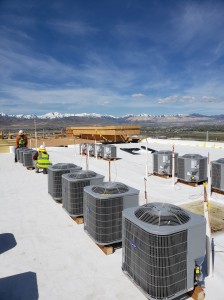
Point of View, Utah, 2020
On January 1st, the Department of Energy’s (DOE) new standards for AC units came into effect. These standards are designed to improve air conditioning efficiency and code compliance at a federal level. According to the DOE, “the new or replacement heating and cooling equipment shall have an efficiency rating equal to or greater than the minimum required by Federal law for the geographic location where the equipment is installed.” This means that the new energy efficiency and testing regulations are in place across the country according to region. For example, there is a northern region, a southeastern region, and a southwestern region. The new testing and efficiency protocols in each region call for SEER-level changes.
What is SEER?
SEER stands for seasonal energy efficiency ratio. It measures the air conditioner’s cooling output vs. the energy it consumes. The higher the SEER rating, the more efficient the AC technology. The new DOE standards require a minimum SEER increase on AC equipment according to region. In the Northern States, AC units must now meet a minimum SEER 14 level, and in the southern states, 15. Another change required by the updated DOE standards is that the AC industry will adopt the SEER 2 standard on units, which measures the total heat removed from the space against the energy it uses during the process. SEER 2 is a higher rating and will require more efficiency from AC equipment to use less energy.
How will these changes affect our projects?
The new standards will have an industry-wide effect to improve efficiency and replace aging equipment. As a multie-family contractor, our projects are usually built from the ground up, so we already utilize the latest technology during the building process. But older HVAC and AC systems that require replacement parts may suffer as the changes come into effect, and it becomes harder to find compatible parts. Initially, we suspected there might be some inventory challenges as manufacturers adapt to the new standards, but luckily our team is always planning ahead to keep our inventory management in control.
Overall the DOE’s standard changes are welcome. They are designed to improve efficiency, reduce energy costs, and address environmental impacts. As a plumbing and HVAC firm, we are also open to new technology and standards that help improve our world, and these new standards are no exception. We look forward to working with more efficient AC technology and providing our projects with the best HVAC and AC installations we can do!






